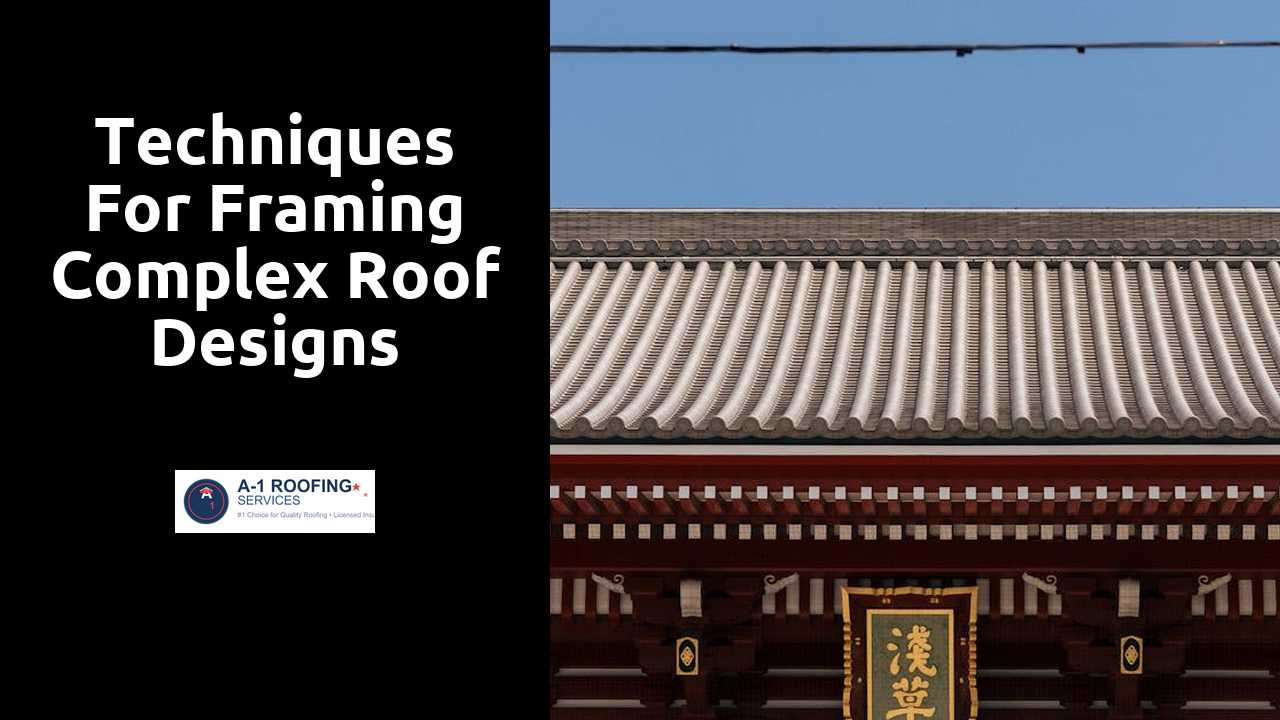
Techniques for Framing Complex Roof Designs
Table Of Contents
Incorporating Architectural Features
Complex roof designs can be enhanced significantly through the addition of architectural features. Elements like gables, turrets, and hip roofs not only add visual interest but also contribute to the overall character of a home. Strategic placement of these features can improve symmetry, create unique silhouettes, and even allow for more natural light within the structure. Each feature should align with the home’s style, providing coherence while ensuring functionality remains intact.
Incorporating features such as decorative eaves, brackets, or cross gables can elevate a standard roof into something extraordinary. These additions can reflect personal style and regional aesthetics. Careful attention to detail in the design and execution of these elements helps achieve an inviting appearance. Customization in these areas can also set a home apart from others in the neighborhood, making a lasting impression.
Here is a great resource for anyone looking to expand on this topic.
Adding Dormers and Valleys
Dormers can significantly enhance both the aesthetic appeal and functional space of a roof. Their design allows for additional headroom and natural light, transforming an otherwise limited attic area into a cozy living space or a bright bedroom. The positioning of dormers must be thoughtfully planned, considering both style and structural integrity. Incorporating various types of dormers, such as gabled or hipped, can further accentuate architectural beauty while meeting the needs of the occupants.
Valleys are critical in managing water runoff and preventing moisture buildup on complex roofs. When two sloped planes meet, the valley serves as a channel for rain and snow, directing it away from the structure. Proper installation of flashing in the valleys is essential to mitigate the risk of leaks. Additionally, choosing the correct materials for valley construction can improve durability and enhance weather resistance, ensuring that the roof remains reliable for years to come.
Weatherproofing Complex Roofs
A well-constructed roof is essential for protecting a building from various weather conditions. Careful attention to material selection plays a significant role in enhancing weather resistance. Utilizing high-quality roofing materials can help ensure longevity. Advanced sealants and barrier systems prevent water intrusion at critical points, particularly around chimneys and valleys.
Proper installation techniques are equally important for maintaining a weatherproof structure. Each component should be secured tightly, with overlaps designed to channel water away effectively. Additionally, attention to ventilation helps reduce moisture buildup in the attic, decreasing the risk of mold and deterioration. Regular inspections are necessary to identify potential vulnerabilities, allowing for timely repairs and adjustments.
Effective Methods for Leak Prevention
Proper installation of roofing materials plays a crucial role in preventing leaks. Ensuring that each shingle, tile, or panel is securely fastened and overlapping correctly is essential. Flashing also requires careful attention, especially around chimneys, vents, and valleys. Using high-quality materials that are specifically designed for your region's climate conditions can significantly reduce the risk of water intrusion.
Regular inspection and maintenance are vital to uphold the integrity of the roof. Checking for damaged or missing shingles should be a routine part of home maintenance. Also, clearing debris from gutters and downspouts facilitates proper drainage, minimizing the chances of water pooling and seeping under roofing materials. Identifying and addressing minor issues early can prevent costly repairs and extensive damage associated with leaks.
Energy Efficiency in Roof Framing
Incorporating energy-efficient practices in roof framing can significantly enhance a building's overall sustainability. A well-framed roof supports advanced insulation materials, which help maintain a consistent indoor temperature and reduce heating and cooling costs. Employing reflective roofing materials can also minimize heat absorption, thereby improving energy efficiency. Attention to detail in framing can create spaces that accommodate these types of insulation and materials effectively.
Proper ventilation is crucial in maximizing energy efficiency. Adequate airflow helps prevent moisture buildup, which could lead to mold and structural damage. Roof designs that facilitate effective ventilation allow heated air to escape during warmer months, reducing reliance on air conditioning. Incorporating vents and designing roof spaces that encourage natural air circulation can enhance the comfort level within a building while lowering energy consumption.
Utilizing Insulation and Ventilation
Proper insulation is critical in achieving energy efficiency for complex roof designs. Selecting the right type of insulation material can significantly impact temperature control within the building. Fiberglass batts, spray foam, and rigid foam boards are popular choices. Each option offers varying R-values, which determine how well the material resists heat transfer. It's essential to assess the specific climate of the area when deciding which insulation will provide the best performance.
Ventilation also plays a crucial role in maintaining the health and efficiency of a roof. Adequate airflow helps regulate temperature and moisture levels, preventing issues like mold growth and structural damage. Installing ridge vents, soffit vents, and gable vents can facilitate proper air circulation. Balancing insulation and ventilation ensures that the roof not only conserves energy but also prolongs its lifespan by protecting against the elements.
Related Links
The Impact of Local Building Codes on Roof Framing DesignEssential Tools for Roof Framing in Residential Projects